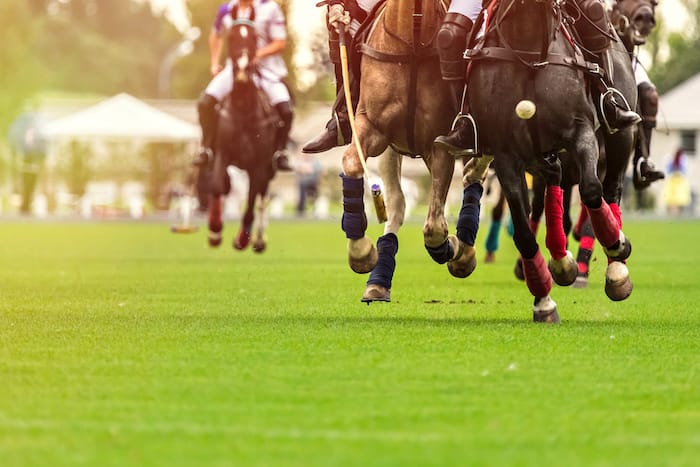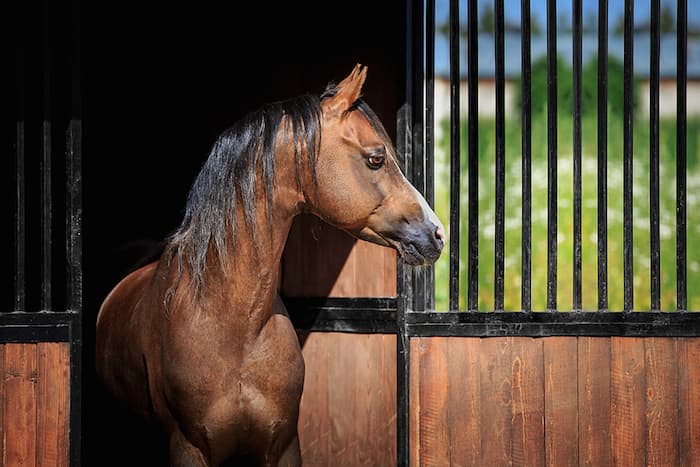One of the exciting forms of entertainment that many people look forward to watching is horse racing. Horses are animal athletes that can run at impressive speeds, making them incredible and thrilling to watch. Furthermore, a horse racing competition is also easily accessible since you can watch it from the TV or watch it live if you have a ticket for the show. The best part about horse racing is that it allows the audience to bet on their favorite horses and possibly win large wages.
But betting aside, if you’re a massive fan of horse racing competitions, you’ve probably noticed some horses with bandages on their legs. In contrast, others get into the match without any wraps. And so, you may wonder, what is the purpose of those horse leg wraps and bandages?
Reasons Why Horses Have Leg Wraps And Bandages During Races
Horses have strong legs designed for high jumping and speed racing. But like any other animals, they are also vulnerable to injuries. Thus, horse owners take precautionary steps to care for and protect their horses’ legs before, during, and after the competitions.
There are various reasons why many horse owners bandage their horses with leg wraps, especially during competitions. Leg wraps support their ligaments and tendons and protect them from injuries and rundown abrasions that might happen during races.
If you’re a horse owner and you’re new to using leg wraps, it’s recommended that you have an experienced person guide you in the proper way of wrapping their legs since incorrect wrapping can lead to serious harm for your horse.
Here’s a detailed guide behind the usage of leg wraps and bandages for horses.
- To Protect Their Legs Against Injuries
It’s up to the horse owners whether they want to wrap their horse’s legs with bandages or not, as it’s an optional factor in the competition. And so, not all horses participating in the race have leg wraps. Some people may think that leg bandages define the horse’s condition, but this is not true. Most of the time, the decision is based on the horse’s owner’s experience.
There are three ways a horse owner can put leg wraps on their horse. They can either put them on the front legs, rear legs (back legs), or all legs.
- Bandages On Rear Legs
Some racehorse owners wrap their horse’s rear legs with bandages, often called ‘rundown bandages.’ The purpose of rundown bandages is to prevent speedy-cutting and friction abrasions. Friction abrasions happen when the horse suddenly goes down on the ground with its fetlock area from the back, creating friction. Horses with long pasterns are often prone to friction abrasions. Other horses could also experience friction abrasion if they race on surfaces with deep tracks.
Aside from friction abrasion, bandages on the horse’s rear legs will also protect the horse from speedy-cutting. Speedy-cuts happen when the horse’s front foot accidentally hits the rear leg due to hard running. When this occurs, the horse will be at risk for tendon damage and severe lacerations since their front foot has a horseshoe that would hit like a knife against the rear leg’s soft tissue.
- Bandages On Front Legs
Racehorse owners who focus on wrapping their horse’s front legs aim to minimize their risk of interference injuries. Interference injuries are often due to the horse’s limbs hitting their other legs while running. This usually happens to horses with improper shoeing, poor fitness, or simply from their running mechanics.
Even the healthiest horse could still misstep and hit its legs during the race, leading to interference injuries. The injury’s severity can range from bruising to a deep cut. With interference injuries, a horse may experience pain and swelling around the fetlock area, hindering them from temporarily pursuing race competitions in the future.
- To Provide Tendon Support
Some horse owners may also wrap their horse’s legs with bandages to provide tendon support while running for the competition. This is important, especially if their horse has been injured in the past.
But even with a record of past injury, some horse owners still don’t provide leg wraps for their horse because leg wraps could increase the horse’s temperature, which could be good or bad for their racing performance. Thus, they are advised to consult a vet first to see if leg wraps are good for their horse or not, as this is a case-to-case basis.
For horse owners who are recommended to use leg wraps, they are also advised not to leave the wraps or bandages on their horse’s legs for a day or more. Leaving their leg wraps on even after the competition could damage their legs’ soft tissues and cause pressure sores on their skin. Generally, legs wraps or bandages should be removed within 12 hours and re-wrap when necessary.
- To Keep Pests Away From The Horse’s Legs
Flying insects are prevalent in a horse barn, and that issue still happens while the horses are waiting in their cages before the competition starts. These flying pests often linger around the horse’s face, body, and especially their legs. Since these insects can be irritating for the horses, they end up constantly pounding their feet on the ground to keep the horseflies away.
While it’s an effective method to ward off these pests, repetitively pounding their feet on the ground can hurt their legs and possibly affect their performance during the race. And so, some horse owners wrap their horses’ legs to keep the pests away and prevent their horses from pounding on the ground.
- To Enhance The Horse’s Appearance
Some horse owners want to ensure that their athlete looks their best and stands out from their competitors. And so, they use leg wraps and bandages to enhance their horses’ appearance and make them look special. Some would even go out their way into braiding their horse’s hair and adding colorful wraps to make them distinct. Although accessorizing is allowed during competitions, horse owners are still reminded not to overdo it as some accessories could come loose during the race, affecting their horse’s chance of winning.
- To Cover Wounds
Even with the utmost care, horses can still get injured. So, if a horse has a cut on its lower legs, the owners need to clean the wound immediately, apply an antiseptic gel and cover it with leg bandages to prevent infection. Generally, the horses’ wounds can heal relatively quickly, especially if the cut is small. However, horse owners need to check the leg wraps daily for infection. The horse can still compete if the wound is all good to go.
The Bottom Line
Overall, leg wraps and bandages can function differently for every horse. Some horse owners use them to protect their horses during the competition, enhance their appearance, keep pests away, or cover their wounds. Now you know that bandages are used for all the good reasons.
Author Bio: Walter B. Arias is a horse breeding specialist and has been in this line of work for over 22 years. Often, he conducts lectures and writes blogs to share his expertise about horses. Walter enjoys camping with his family during his free time while taking their family horses with them.



